The Prescription Drug Monitoring Program

Prescription drug abuse is a serious public health issue in the United States. At least 2.1 million Americans suffer from a substance use disorder related to prescription painkillers.1 In response to this widespread problem, prescription drug monitoring programs have been employed in 49 states, Guam and the District of Columbia.
What Is a Prescription Drug Monitoring Program?
A prescription drug monitoring program is one of many strategies a state may employ to curb prescription drug abuse. Prescription drug monitoring programs help states to protect public health and safety by collecting and tracking information about the distribution of frequently abused drugs.
A PDMP is an electronic database that tracks the prescribing and dispensing of controlled substances in a state. The terms of a PDMP can vary among states, but the controlled substances monitored by a PDMP typically include narcotic pain relievers such as hydrocodone and oxycodone, tranquilizers such as diazepam and certain stimulant drugs. The information collected by a PDMP is used to identify local drug epidemics in their earliest stages, spot instances of “doctor shopping” and investigate cases of drug diversion.
Accessing PDMP Information
The concept of a prescription drug monitoring program can raise privacy concerns, but these programs place the utmost importance on ensuring the privacy of patients. Data collected in a PDMP is treated as confidentially as a medical record.
The laws regarding access to prescription drug monitoring program information differs from state to state, but the majority of states allow pharmacists and medical practitioners to access PDMP data for patients under their care. Other officials may also be allowed to obtain PDMP data. For example, law enforcement officials may request a PDMP report for active drug investigations. Licensing boards may also make use of PDMP data if they are investigating a healthcare provider who prescribes or dispenses controlled substances.
A Powerful Tool
Research shows that states that make full use of a PDMP have seen positive results. One study revealed that using PDMP data in an emergency room setting resulted in physicians making more informed decisions about prescription painkillers. Sixty-one percent of patients were given fewer opioid medications than planned or none at all, based on PDMP information.2
Some people fear that prescription drug monitoring programs keep patients from receiving the pain medication they need for legitimate medical conditions, but research proves otherwise. In fact, the same emergency room study showed that 39 percent of patients actually received more opioid pain medication than originally planned, after PDMP records confirmed that the patients had no recent history with controlled substances.
Prescription drug monitoring programs are promising weapons in the war against prescription drug abuse. By identifying instances of inappropriate usage, PDMPs have a positive effect on patient safety and can prevent potentially fatal overdoses. In conjunction with other regulations and public health initiatives, these monitoring programs can make a real impact on the prescription drug abuse epidemic.
Prescription drug abuse is a serious public health issue in the United States. At least 2.1 million Americans suffer from a substance use disorder related to prescription painkillers.1 In response to this widespread problem, prescription drug monitoring programs have been employed in 49 states, Guam and the District of Columbia.
What Is a Prescription Drug Monitoring Program?
A prescription drug monitoring program is one of many strategies a state may employ to curb prescription drug abuse. Prescription drug monitoring programs help states to protect public health and safety by collecting and tracking information about the distribution of frequently abused drugs.
A PDMP is an electronic database that tracks the prescribing and dispensing of controlled substances in a state. The terms of a PDMP can vary among states, but the controlled substances monitored by a PDMP typically include narcotic pain relievers such as hydrocodone and oxycodone, tranquilizers such as diazepam and certain stimulant drugs. The information collected by a PDMP is used to identify local drug epidemics in their earliest stages, spot instances of “doctor shopping” and investigate cases of drug diversion.
Accessing PDMP Information
The concept of a prescription drug monitoring program can raise privacy concerns, but these programs place the utmost importance on ensuring the privacy of patients. Data collected in a PDMP is treated as confidentially as a medical record.
The laws regarding access to prescription drug monitoring program information differs from state to state, but the majority of states allow pharmacists and medical practitioners to access PDMP data for patients under their care. Other officials may also be allowed to obtain PDMP data. For example, law enforcement officials may request a PDMP report for active drug investigations. Licensing boards may also make use of PDMP data if they are investigating a healthcare provider who prescribes or dispenses controlled substances.
A Powerful Tool
Research shows that states that make full use of a PDMP have seen positive results. One study revealed that using PDMP data in an emergency room setting resulted in physicians making more informed decisions about prescription painkillers. Sixty-one percent of patients were given fewer opioid medications than planned or none at all, based on PDMP information.2
Some people fear that prescription drug monitoring programs keep patients from receiving the pain medication they need for legitimate medical conditions, but research proves otherwise. In fact, the same emergency room study showed that 39 percent of patients actually received more opioid pain medication than originally planned, after PDMP records confirmed that the patients had no recent history with controlled substances.
Prescription drug monitoring programs are promising weapons in the war against prescription drug abuse. By identifying instances of inappropriate usage, PDMPs have a positive effect on patient safety and can prevent potentially fatal overdoses. In conjunction with other regulations and public health initiatives, these monitoring programs can make a real impact on the prescription drug abuse epidemic.








